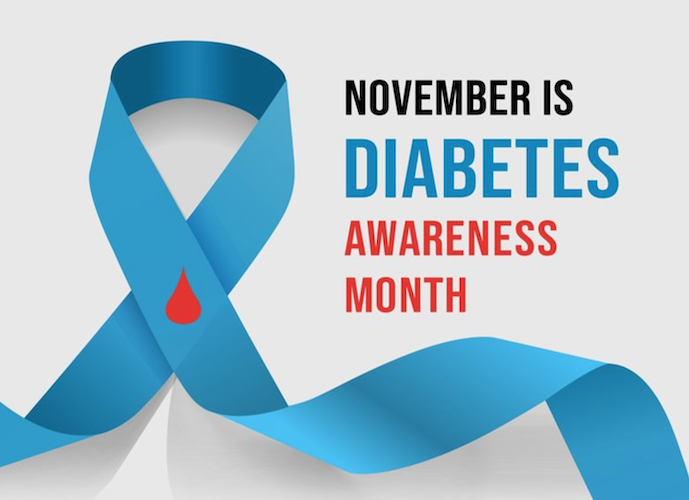November is National Diabetes Month. Diabetes is a disease that occurs when your blood sugar, also known as blood glucose, is too high. It damages blood vessels all over the body, including in the eye.
Sugar can block the tiny blood vessels that go to the retina, causing them to swell, leak fluid or bleed. The retina is the nerve layer at the back of the eye that senses light and helps to send images to the brain through the optic nerve in the back of the eye. To make up for blocked blood vessels, the eye can also grow new blood vessels that don’t work well and easily leak or bleed. All of these changes can cause loss of vision.
Damage to the blood vessels in the retina is called diabetic retinopathy. It can also lead to a condition called diabetic macular edema which is a build-up of fluid in the macula caused by the damaged blood vessels. The macula is an area in the center of the retina that is responsible for sharp, straight-ahead vision.
According to the Centers for Disease Control and Prevention (CDC), about 90% of vision loss from diabetes can be prevented. Here are a few steps you can take:
- Get an annual, dilated eye exam. Diabetic retinopathy does not usually have any symptoms at first yet an optometrist or ophthalmologist can detect early signs of damage to the retina and optic nerve by performing a comprehensive, dilated eye exam. This early detection is critical to initiating treatment the can help to protect your vision.
- Stay physically active. Aim for at least 30 minutes of exercise each day. This helps to lower blood sugar levels and manage weight.
- Eat healthy. This also helps to keep the body’s blood sugar in the target range. Focus on eating a diet that is low in fat and full of fruits, vegetables and whole grains.
- Avoid smoking. Smoking increases the risk of developing many diabetic complications, including diabetic retinopathy.
- Take your insulin or diabetes medicines as prescribed by your physician. Managing your diabetes helps to keep your blood sugar levels as normal as possible and is the best way to prevent diabetic eye disease.
- Control your blood pressure and cholesterol. Having high blood pressure or high cholesterol along with diabetes increases your risk of developing diabetic retinopathy.
Click here to learn more about diabetic retinopathy or here to learn more about macular edema.


